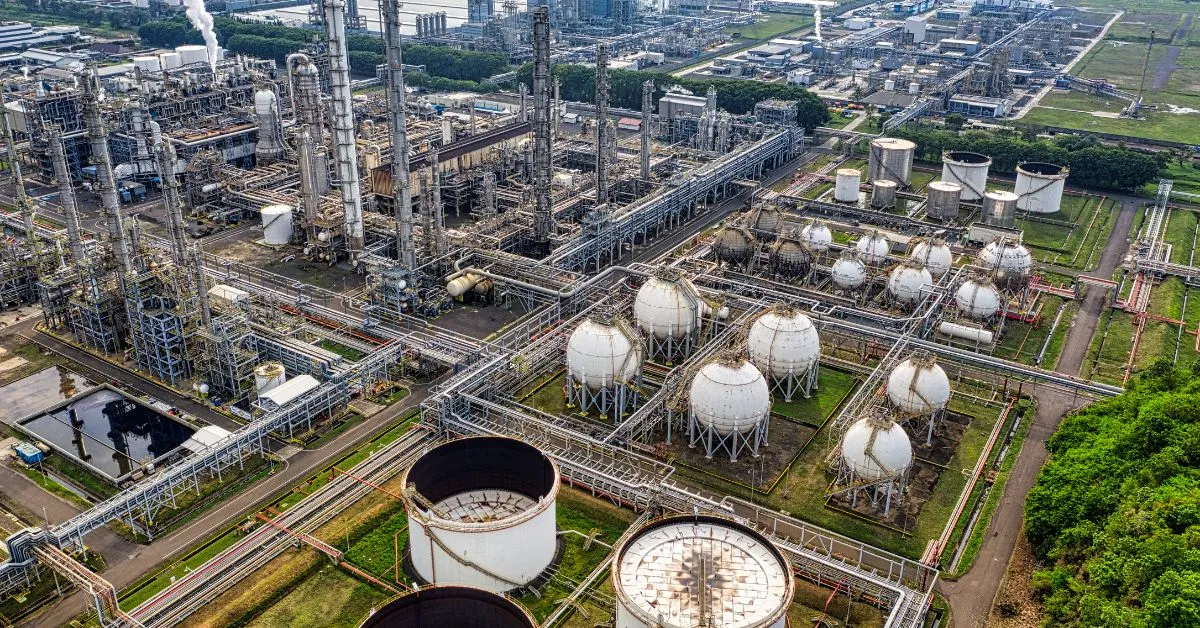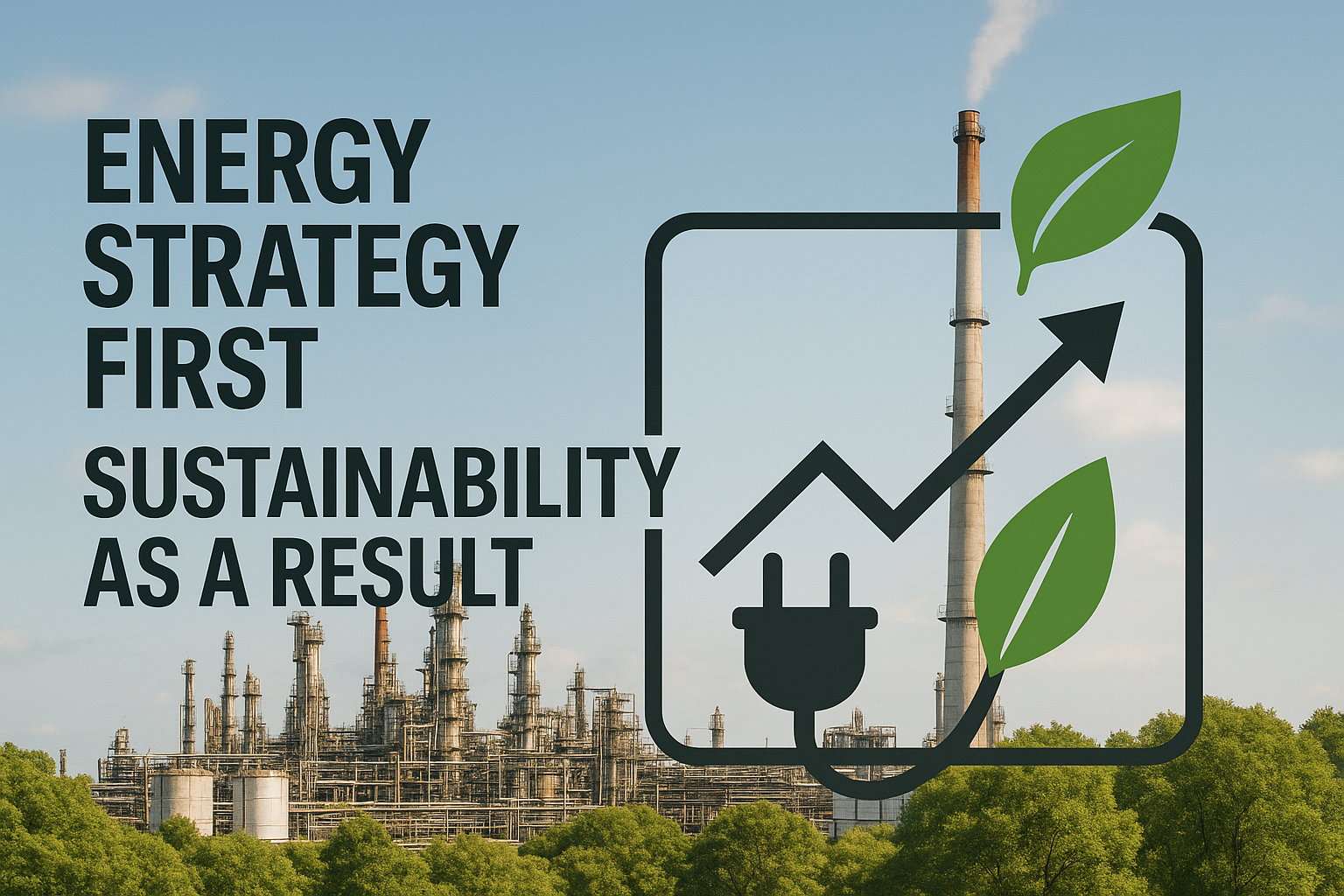Energy now sits alongside feedstock and labor as a top-three expense for nearly every chemical plant, and its price volatility can erase thin margins overnight. At the same time, utilities combustion and purchased power drive a large share of Scope 1 and 2 emissions, pulling your operation into the spotlight of corporate ESG scorecards and emerging carbon costs.
Turning that pressure into profit starts with seeing where every kilojoule goes. Three interconnected strategies, real-time visibility, process-energy linkage, and AI-driven setpoint control, reveal hidden waste, connect it to specific operating conditions, and then automate the most energy-intensive decisions.
The payoff is substantial. Industry benchmarks show that leading sites run 10–15% more efficiently than the average facility, while most plants still have 4–13% improvement potential locked inside day-to-day operations. By capturing those gains, you can trim utility costs, cut emissions, and protect throughput and product quality, all without major capital projects.
Current Outlook on the Chemical Manufacturing Industry
The sector ranks among the most energy-intensive in industry, driving high steam, electricity, and fuel demand across reactors, distillation trains, and compressor networks. Recent price volatility has widened cost spreads between units and even batches, elevating power management from a routine expense to a board-level concern.
Corporate ESG targets and tightening decarbonization mandates are pressuring plants to cut emissions without sacrificing throughput. Top-quartile facilities already demonstrate the potential, proving that smarter operation—not just new equipment—delivers real savings. Most sites could capture efficiency through operational changes alone, a gap ripe for low-capex action.
Capital budgets remain constrained, shifting strategies from large retrofits to digital and operational levers: real-time monitoring, utilities optimization, and AI-assisted control. Plants that master these tools protect margins today and gain a head start on tomorrow’s emissions requirements.
3 Core Strategies for Smarter Energy Management
Improving energy performance means tackling both the visibility and the control of how utilities are used. When plants can see exactly where energy is going, understand the conditions driving that use, and act on those insights in real time, efficiency gains follow naturally. The right mix of technology and operational discipline turns what was once hidden waste into measurable savings and more stable production.
1. Make Energy Use Visible in Real Time
Relying on yesterday’s spreadsheets hides costly losses. By the time a weekly utility report reaches your desk, steam traps may have leaked for days, and compressors may have drifted into inefficient load bands. Energy dashboards stream data directly from your distributed control system (DCS), historians, and utility meters, allowing you to see deviations the moment they occur.
Real-time visibility shifts decision-making from reactive to proactive. When every kilowatt, kilogram of steam, or cubic meter of fuel gas updates in seconds, you can correct valve misalignments before they vent to the atmosphere and schedule maintenance before fouling robs heat-transfer efficiency. Predictive models that function like advisors forecast tomorrow’s constraints, helping you adjust setpoints during price spikes or ambient swings.
A monitoring setup pulls from utility meters, critical process tags, and IoT sensors, validates signals, and publishes intuitive charts in the control room and daily review meetings. Alerts fire when KPIs breach statistical limits, creating clear accountability and accelerating root-cause analysis. Focus on these quick wins to establish immediate visibility:
- Map unmetered utilities—especially steam, fuel gas, and compressed air—and install flow or pressure transmitters
- Standardize update intervals to one minute or less for all high-impact KPIs
- Publish dashboards to the control room and make them part of your daily production huddle
- Configure alerts that flag deviations exceeding normal operating variance, not just hard alarms
Plants using energy monitoring systems report faster anomaly detection, lower utility bills, and fewer safety incidents triggered by unseen equipment stress.
2. Link Process Conditions to Energy Performance
Power waste occurs every second that your reactors, columns, and compressors deviate from their most efficient operating points. A minor shift in column pressure or compressor suction temperature ripples through utilities and drives fuel or electricity demand higher than necessary.
Focus on these high-leverage variables first:
- Reflux ratio and pressure in distillation – directly impacts steam consumption
- Reactor temperature and residence time – affects heating/cooling utilities
- Compressor discharge pressure – drives electricity demand
- Pump or fan speed – controls motor load and power draw
These parameters directly control steam draw, fuel gas flow, and motor load. Treating them as isolated process variables misses their impact on overall efficiency.
Historical data analysis using multivariate regression or PCA quantifies which setpoints affect utility KPIs most significantly. First-principles methods like pinch analysis expose thermodynamic bottlenecks, while digital twin models simulate scenarios before you change the DCS.
Implementing a practical approach yields measurable results:
- Pull historian data from your existing systems
- Correlate intensity metrics to key process variables
- Share findings with process engineers to build consensus
- Implement new targets based on data-driven insights
- Maintain continuous monitoring to prevent backsliding
Continuous monitoring prevents gains from drifting back to previous inefficient levels.
3. Automate Energy-Intensive Setpoints With AI
Manual setpoint tuning creates expensive inefficiencies. Operators rely on experience or trial-and-error, which means compressors work harder than needed, columns over-reflux, and furnaces burn excess fuel.
Advanced AI techniques fix this by learning from years of historian data and writing optimal setpoints directly to the distributed control system (DCS) every few seconds. These algorithms evaluate thousands of combinations simultaneously, balancing product quality, throughput, and power intensity.
The technology stack makes real-time optimization possible. Physics-informed AI models deliver fast, plant-specific predictions of how temperature, pressure, and flow changes ripple through your system. A reinforcement learning (RL) engine searches that virtual space to find lower-consumption operating points while respecting safety and quality constraints. Explainable interfaces translate each recommendation into plain language, building operator trust before implementation.
Start your pilot with a well-instrumented loop where costs are measurable, a steam-driven compressor or fired heater works well. Build and validate an AI model on historical data, run it in advisory mode against economic scenarios, and involve control-room teams early. This ensures changes are fully understood before closing the loop.
Transform Your Chemical Plant with Smart Energy Optimization
The strategies of real-time visibility, process-utility linkage, and AI-driven setpoint control create compounding benefits when implemented together. By enhancing how existing assets are managed, significant savings can be achieved without new equipment investments. Success requires a blend of technology and human factors, emphasizing changes in both system operations and staff involvement.
To kickstart this transformation, consider conducting a cost-free assessment with Imubit to identify current inefficiencies. This involves pinpointing 3-5 key process variables that can be optimized for better performance. From there, exploring AI pilot opportunities can offer insights into further improvements.
As the chemical industry evolves, the competitive advantage of integrating optimization strategies becomes increasingly clear. Embracing these techniques not only aligns with sustainability goals but also enhances operational efficiencies, ensuring your plant remains at the forefront of the industry.




